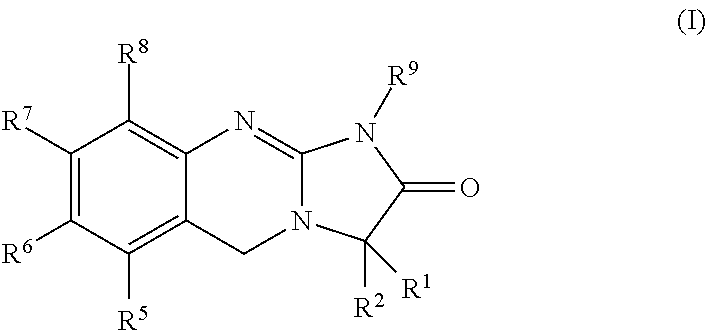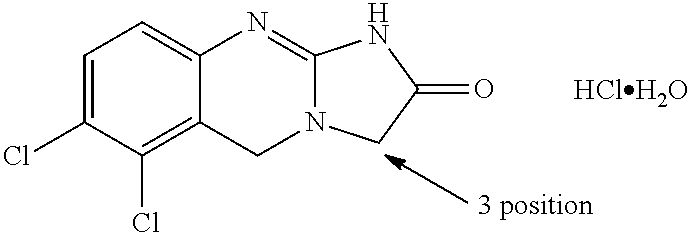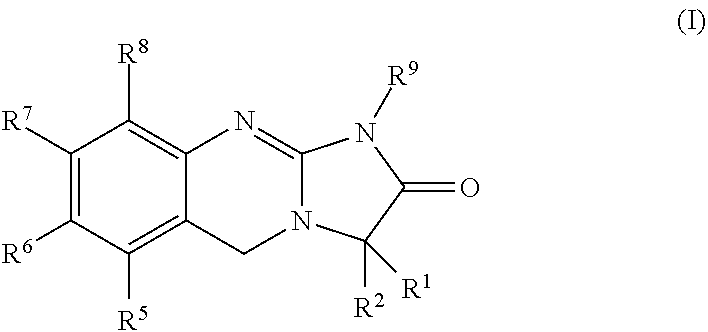Substituted quinazolines and their uses for myeoloprolific and thrombotic diseases
a technology of myeoloprolific and thrombotic diseases and substituted quinazolines, which is applied in the direction of biocide, drug composition, extracellular fluid disorder, etc., can solve the problems of limiting its utility, significant proportion of patients, and 50% of patients who cannot tolerate the drug during long-term treatment, so as to improve the side effect profile, improve the pharmacokinetics, and improve the effect of tolerability
- Summary
- Abstract
- Description
- Claims
- Application Information
AI Technical Summary
Benefits of technology
Problems solved by technology
Method used
Image
Examples
Embodiment Construction
[0057]The present invention is directed to 3-substituted analogues of the established platelet lowering agent anagrelide. Substitution at the 3-position of the anagrelide molecule would be expected to block or hinder the principal site of metabolism and potentially preclude the formation of the highly potent PDE III inhibitor 3-OH anagrelide while substitution at the 1-position has surprisingly been found to abolish PDE III inhibition. The compounds of the present invention retain the anti-megakaryocytic properties (hence platelet lowering activity) of the parent drug molecule but have reduced PDE III inhibitory properties and hence lower potential for unwanted cardiovascular and anti-aggregatory side-effects. They also have the potential for improved pharmacokinetic characteristics as the result of inhibition of metabolism.
[0058]The pharmaceutically acceptable acid addition salts of certain of the compounds of formula (I) may also be prepared in a conventional manner. For example, ...
PUM
 Login to View More
Login to View More Abstract
Description
Claims
Application Information
 Login to View More
Login to View More - R&D
- Intellectual Property
- Life Sciences
- Materials
- Tech Scout
- Unparalleled Data Quality
- Higher Quality Content
- 60% Fewer Hallucinations
Browse by: Latest US Patents, China's latest patents, Technical Efficacy Thesaurus, Application Domain, Technology Topic, Popular Technical Reports.
© 2025 PatSnap. All rights reserved.Legal|Privacy policy|Modern Slavery Act Transparency Statement|Sitemap|About US| Contact US: help@patsnap.com



